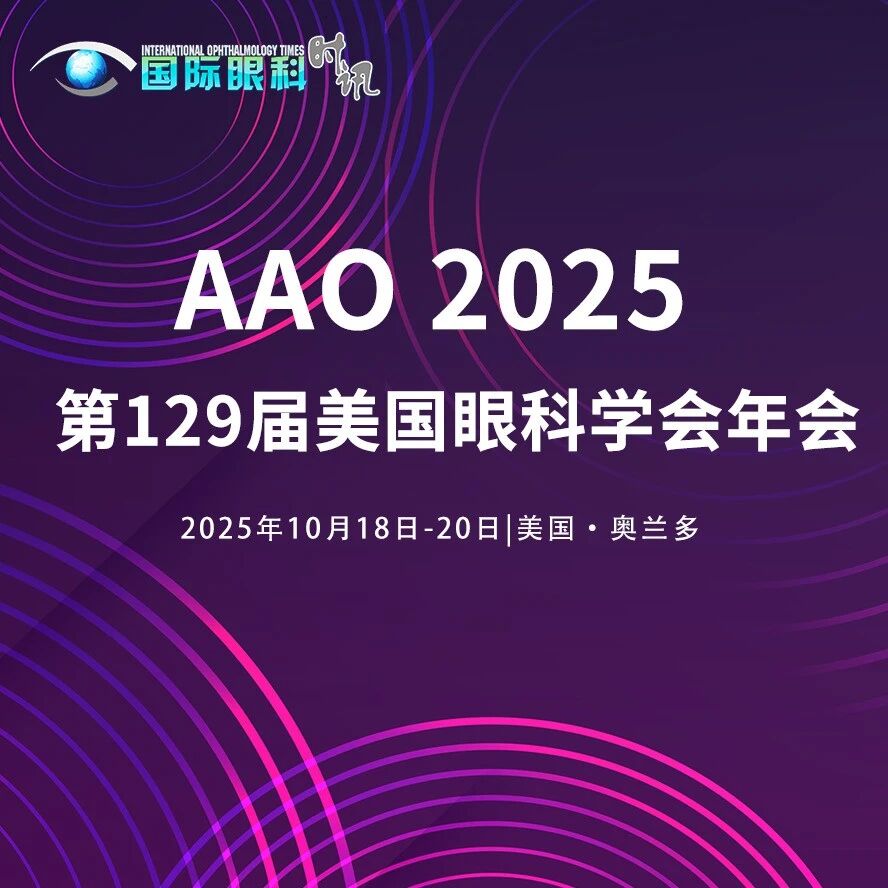编者按:AMD是老年人群中常见的眼病,分为干性和湿性两种,治疗的方法也各不相同。湿性AMD以抗VEGF治疗为主,但存在重复治疗、注射次数多等问题。干性AMD的治疗更加棘手,尚无临床广泛证明有效的治疗方法,但相关的临床研究一直在进行中。针对这些问题,大名鼎鼎的Wills 眼科医院视网膜科专家给出了他们的看法。本期便对湿性AMD的一些研究新进展作一汇报。
中英文字幕
Taylor swift
Syed医生:我和Wills 眼科医院视网膜科的Ajay Kuriyan医生在这里。Kuriyan医生是一个具有创新性思维的人,并且一直激励着我。Kuriyan医生今天将与我们在这里一起讨论湿性AMD和干性AMD的进展。
Dr Syed: I am here with Dr Ajay Kuriyan from the Wills Eye Hospital Retina Service. Dr Kuriyan is someone who has inspired me from the day I met him. He is someone who loves to think outside the box and has inspired me to do so as well. Dr Kuriyan is here with us today to talk with us about advances in wet and dry AMD. Thanks Dr Kuriyan for being with us this morning.
Kuriyan医生:非常感谢您邀请我,我期待着谈论这个话题。
Dr Kuriyan: Thank you so much for inviting me. I am looking forward to talking about this topic.
Syed医生:首先,您能告诉我湿性AMD患者的治疗方案吗?
Dr Syed: To start off, can you tell me what is in the pipeline for patients with wet AMD?
Kuriyan医生:对于湿性AMD来说,这真是一个激动人心的时刻。我们目前在进行III期临床试验,试图增加抗VEGF治疗的持续时间或者增加联合抗VEGF治疗。抗VEGF治疗确实彻底改变了湿性AMD的治疗方法,但重复的眼内注射对患者而言是一个巨大的治疗负担。我们正处于一个激动人心的时刻,因为正在进行大量研究,以查看不同成分的抗VEGF是否可以在眼中持续更长的时间,或者不同的递送方法是否可以帮助使抗VEGF药物在眼中持续更长的时间。我们正在研究一种可手术植入的缓释装置,该装置可以存储抗VEGF药物并随着时间缓慢释放。同时着眼于基因疗法研究,可促使眼内特定细胞增加分泌抗VEGF蛋白的功能,因此眼内可以存在长效的抗VEGF蛋白。
Dr Kuriyan: This is a really exciting time for wet AMD. We have a lot of studies going on right now in the phase III stage looking at trying to increase the duration of anti-VEGF treatments or the combination of anti-VEGF treatments. We know that anti-VEGF treatments have really revolutionized the treatment of wet AMD, but we see that over time, this is a big treatment burden for our patients to keep coming back into the clinic again and again for these injections. We are at a very exciting time because there is a lot of research being done to see if different compositions of anti-VEGF can potentially last longer in the eye, or if different delivery methods might help make the anti-VEGF last longer in the eye. Some of the things being looked at are usage of a port delivery device, essentially having a surgically implanted device that can store the anti-VEGF agent and slowly release it over time. There are also studies looking at gene therapy, where we essentially turn the cells of the eye into anti-VEGF producers, so there can be long-lasting anti-VEGF inside the eye.
Syed医生:这些听起来非常令人兴奋。我对这些内容一无所知,所以我想听听更多关于这些内容的信息。您能告诉我更多有关缓释装置的信息吗?哪些是最佳适应证患者?到目前为止,研究取得了哪些结果?
Dr Syed: These sound very exciting. I literally know nothing about these, so I would love to hear more about each of those. Can you tell me more about the results from the port delivery devices? Who would be candidates for this? What are some of the outcomes we have seen so far?
Kuriyan医生:我们有很好的II期研究数据,结果令人充满希望。研究基本上集中在有持续性视网膜层间或者视网膜下积液的患者身上,看是否可以通过植入这种缓释装置来改善这种积液。我们已经从II期研究中看到了一些非常有利的结果,III期研究范围更广一些,也适用于未接受过治疗的患者。这是一种非常令人兴奋的治疗方式,因为它有可能达到维持治疗的长期性的目的。有时确实需要重新填充缓释装置的药物,但这可以在诊所完成。不过,缓释装置的初始安装需要通过一次手术完成,所以它不会适合所有人。有些患者不接受外科手术以缩短注射治疗间隔,但是可以肯定的是,有些患者不喜欢这些注射而想要可以持续更长的治疗方式。对于这些患者而言,是一个潜在的好设备。
Dr Kuriyan: We have had good phase II study data that have looked very promising. Studies are basically focused on patients who have persistent fluid and to see if that can be ameliorated with the port delivery device. We have seen some very positive outcomes from our phase II studies. Our phase III studies are a little broader and are available to patients who are treatment na?ve as well. This is a very exciting treatment modality because it can potentially result in a long duration therapy. The port does need to be refilled sometimes, so there is a whole system for refilling the port inside the clinic. It is a surgical procedure for the initial installation of the port. It is not going to be for everybody. There are some patients who are not going to want to undergo a surgical procedure to try to decrease the interval of their treatments, but that being said, there are certainly some patients who just don’t enjoy these injections and want something that can last longer. For these patients, this is a potentially great device for them.
Syed医生:装置植入的确切位置在哪里?
Dr Syed: Where is the port placed exactly?
Kuriyan医生:它是经结膜在睫状体扁平部放置的,因此可以看到装置的端口,这就是您知道需要重新填充的方式。您可以在裂隙灯下看一眼,以识别装置端口,使用特殊的注射器重新填充装置,该注射器可以在抽出旧液体的同时注入新的液体。
Dr Kuriyan: It is placed through the pars plana, so it can be placed subconjunctivally. You can see the port, so that is how you know you need to refill the port. You can look under the slit lamp to identify the port, and you can refill it using a special syringe that injects fluid in while drawing out the old fluid.
Syed医生:您在裂隙灯下进行重新填充吗?
Dr Syed: You refill it right at the slit lamp?
Kuriyan医生:是的,您可以在诊所填充它。
Dr Kuriyan: Yes, you can refill it in-clinic.
Syed医生:但是植入这个装置是在手术室里进行?
Dr Syed: But it is placed in the operating room.
Kuriyan医生:对。
Dr Kuriyan: Right.
Syed医生:是否担心结膜糜烂,因为装置放在结膜下?
Dr Syed: Obviously, we don’t have a lot of data yet, but how long is one port functionally effective?
Kuriyan医生:当然对此感到担忧。在早期阶段,这是出现的最大问题之一。但是随着手术技术的改进,这类问题大大减少,不过仍需要继续对患者进行随访。
Dr Kuriyan: We are still learning that information. We are able to place these ports. We are able to refill these ports. The exact duration of how long that lasts is still a little up in the air because we need to follow these patients even longer to find out how long it can actually last.
Syed医生:显然,我们还没有很多数据,目前一个缓释装置有效期的最长时间是多久?
Dr Syed: Are there any concerns about erosion through the conjunctiva or things like that seeing as it is placed subconjunctivall?
Kuriyan医生:我们仍在收集该信息。我们能够放置这些装置,重新填充这些装置,所以一个装置能持续多长时间的仍然悬而未决,因为我们需要跟进这些患者更长的时间,以找出实际上最长可以持续多长时间。
Dr Kuriyan: There certainly are concerns about that. In the early stages, that was one of the biggest issues that was coming up. There have been some advances in the surgical technique for putting in these ports. That has greatly reduced the problem, but it needs to be continued to be monitored for patients.
Syed医生:装置周围是否存在安全隐患?
Dr Syed: Are there any safety concerns around the port?
Kuriyan医生:您刚提到了结膜糜烂,这是我们需要注意的最大问题。此外,一些患者在植入期间可能会发生玻璃体出血。装置里的药物是雷珠单抗,这是一种非常常用的药物。在这一点上,药物本身没有什么不同,这使得从业者和患者对它都更加熟悉。
Dr Kuriyan: You mentioned the conjunctival erosion, which is the biggest thing we need to look out for. Some patients can develop a vitreous hemorrhage during the installation of the port. The medication is ranibizumab, which is a very commonly used medication. The medication itself is not different at this point, which makes it a little more familiar for practitioners as well as patients, because it may be the same medication you have already been providing to patients.
Syed医生:这种药需要多久补充一次?
Dr Syed: How often does that medication need to be refilled?
Kuriyan医生:根据患者的表现会有一些差异,而且我们仍然需要对此进行微调,但是与标准注射治疗相比,就诊次数肯定要少得多。
Dr Kuriyan: There is some variability based on how the patient is doing, and this is something that we are still fine tuning, but there are certainly a lot less of those refill visits compared to standard-of-care treatment.
Syed医生:太酷了。最后,关于这个装置,您认为这是保险公司要涵盖的内容吗?您是否认为患者必须为此负担费用?
Dr Syed: Very cool. Lastly, with regard to the ports, do you think this is something insurance companies will cover? Do you think this is something patients will have to bear the burden of the cost for?
Kuriyan医生:我希望保险公司能够对此进行赔偿。这将是一种治疗医学疾病的方法,只不过是一种替代方法。我们需要更多数据以查看其成本效益如何。它有可能比每月一次,每两月甚至每三月一次的注射更具成本效益。我们希望这是会被批准的,如果它像我们希望的那样有效,那么它将会被批准。
Dr Kuriyan: I am hoping that insurance companies would cover this. It would be a treatment of a medical disease, just an alternative way to do it. We certainly need to run the numbers once it is available to see how cost effective it is. There is the potential for it to be more cost effective than monthly, every eight-weeks or even every 12-weeks injections. We still need more long-term data to fully assess that cost-benefit ratio. We are hoping it is something that would be approved, and if it is as efficacious as we hope it will be, then it will be approved.
Syed医生:该装置可以与其他任何抗VEGFs药物一起使用,还是只能与雷珠单抗一起使用?
Dr Syed: Can the port be used with any of the other anti-VEGFs medications or just ranibizumab?
Kuriyan医生:在这一点上,目前仅仅是雷珠单抗,因为这是试验的设计方式,该装置的专利持有人是Genentech。
Dr Kuriyan: At this point, it is only ranibizumab, because that is the way the trial has been designed, and the proprietary holder of that port is Genentech.
Syed医生:接下来,您能否讨论其他治疗湿性AMD的方法?
Dr Syed: Moving along, were there any other treatments for wet AMD that you wanted to discuss that are in the pipeline or newly available?
Kuriyan医生:我们对FDA批准的brolucizumab的最新进展感到非常兴奋,这种药物在患者的眼睛中可以持续更长的时间。目前,我们仍在等待澄清药物的一些安全问题,以使其更广泛地得到使用,但我们对试验结果感到非常兴奋,并希望可以识别出一些与brolucizumab炎症反应相关的因素。但是在这一点上,潜在的炎症风险无疑限制了其广泛使用。
Dr Kuriyan: We were all very excited about a recent development with the most recent FDA approval of brolucizumab, which lasts longer on average in patients’ eyes. At this time, we are still waiting to clear up some safety concerns for it to be adopted more widely, but we were very excited about the results from the trial and hoping that some factors could be identified to see who is at risk for developing inflammation from brolucizumab. But at this point, the potential risk of inflammation is certainly limiting its widespread adoption.
Syed医生:注射后有多少患者出现这种强烈的炎症反应?
Dr Syed: How many patients experience this intense inflammatory response after injection?
Kuriyan医生:IV期研究中人数不多,因此很难找出确切的发病率。总体而言,我们知道发病率很低。话虽如此,当它发生时,它可能会导致一些非常严重的不良事件和视力丧失。因此我认为,如果您正在使用它,则绝对需要与患者就该特定风险进行更为细致的讨论。即使是正在进行的临床试验,也有更多关于患者潜在风险的讨论。
Dr Kuriyan: It is a very small number of people overall for any phase IV study where you are gathering data after your regular clinical trial is over. It is hard to figure out the exact incidence. Overall, we know the incidence is very low. That been said, when it does happen, it can potentially cause some very serious adverse events and loss of vision. That makes it a little bit of a tough thing to do. I think if you are using it, you definitely need to have a much more nuanced discussion with the patient about that specific risk. Even for the ongoing clinical trials, there have been more discussions about those potential risks for patients as well.
Syed医生:有没有人经常使用它,或者它还处在研究阶段?
Dr Syed: Is anyone using it pretty frequently yet, or is it still undergoing studies?
Kuriyan医生:它肯定在美国有使用,但我认为使用量比没有这些问题的情况要少得多。我认为许多人都期待着尝试找出这种炎症的潜在危险因素,以避免任何患者发生该情况。
Dr Kuriyan: It is definitely being used in the United States, but I think the amount of usage is a lot less than what it would have been if it didn’t have those issues. I think a lot of people are looking forward to trying to identify potential risk factors for that inflammation to avoid any patients who could experience that.
Syed医生:我们担心的并发症是玻璃体炎还是视网膜炎?
Dr Syed: Is the complication we are worried about a vitritis or a retinitis?
Kuriyan医生:我们正在研究各种各样的炎症。有些患者只是前房存在炎症,有些患者的后节存在炎症包括血管炎。这是一个潜在的威胁视觉的问题,这就是为什么在采用它时要谨慎一些。
Dr Kuriyan: We are looking at a pretty wide spectrum of inflammation. There are some patients who only have inflammation in the anterior chamber, and some patients have a very robust inflammation in the posterior chamber, including vasculitis. It is a potentially vision threatening problem, and that is why it has been a little guarded in its adoption.
相关单词学习
Word Study
subconjunctivally 结膜下给药
still a little up in the air 悬而未决
potential risks 潜在风险
vitritis 玻璃体炎
retinitis 视网膜炎
standard-of-care 标准治疗
pars plana睫状体平坦部
2 comments








 京公网安备 11010502033360号
京公网安备 11010502033360号
条评论
Linda Gareth
2015年3月6日, 下午2:51Donec ipsum diam, pretium maecenas mollis dapibus risus. Nullam tindun pulvinar at interdum eget, suscipit eget felis. Pellentesque est faucibus tincidunt risus id interdum primis orci cubilla gravida.